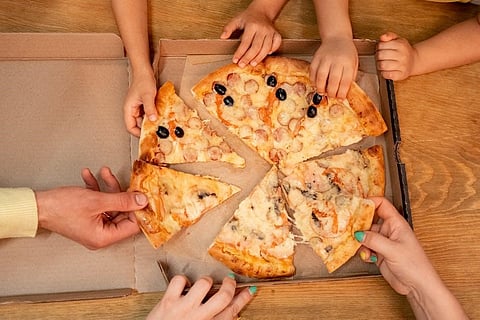

Over the last few years, meal delivery services have evolved from easily obtainable fast-food options straight to your door to subscription services offering a menu of options to health-conscious customers. Like many lifestyle changes in recent times, the burgeoning success of the meal-kit delivery business model is largely due to the effects of the pandemic.
During lockdowns, demand for ready to eat meal delivery services rose exponentially as more people looked for ways to dine at home without having to shop at the supermarket. Facing closure, many restaurants demonstrated the importance of an agile and adaptable business structure at this time, pivoting to delivery services to meet customer needs.
Interestingly, the first ever recorded meal delivery was made by King Humberto of Savoy in 1889 for a pizza. While the question of whether his wife Queen Marguerita provided the inspiration for the pizza of the same name remains uncertain, this was a trend that would take off globally.
A year later, 7,187 km away in Mumbai, Mahadeo Havaji Bachche opened a food delivery service delivering boxes of food to workers called dabbawala, literally “one who carries the box”, which meant that rather than go home for lunch, people could eat at work instead.
While pandemic lockdowns turned out to be something of an opportunity for food delivery businesses, the economic struggle and major disruption caused by world-changing events such as the Great Depression and The Second World War had the opposite effect.
In the 1950s, mass-migration to the suburbs and the growing popularity of television made pizza popular among the masses. While this popular dish came courtesy of 20th Century Italian migrants, Asian food in America dates back to the mid-1800s, with Chinese restaurants becoming popular during the 1920s.
Fast-forward to the present, and the online food delivery market is now worth $221.65 billion (as of 2022) with a projected growth-rate of 10.3%(CAGR) between 2023 and 2030, according to a report by Grand View Research.
Where customers once had to make a phone call to place their order, now food can be delivered quickly and conveniently using apps and tech-enabled delivery methods where customers can view estimates of when their food will be ready, and how long it is likely to take until it arrives.
A key issue in the last few years has been fair pay and working conditions for delivery drivers, with businesses and legislators alike have taken steps to improve worker’s rights, with many hoping this will set the tone for future legislation.
As food delivery drones and robots begin to take off (though it’s doubtful as to whether they will fully replace humans), the integration of augmented and virtual reality promises increased engagement and an added element of fun for hungry customers.
In addition to the ongoing trend for restaurant and grocery deliveries, we’re also likely to see more sustainable, eco-friendly packaging and nutritional information in addition to greater cross-cultural menu options. From a King’s pizza to the rest of the world, the appetite for food delivery shows little sign of slowing down, with many exciting developments still to come.
Follow us on Google News
